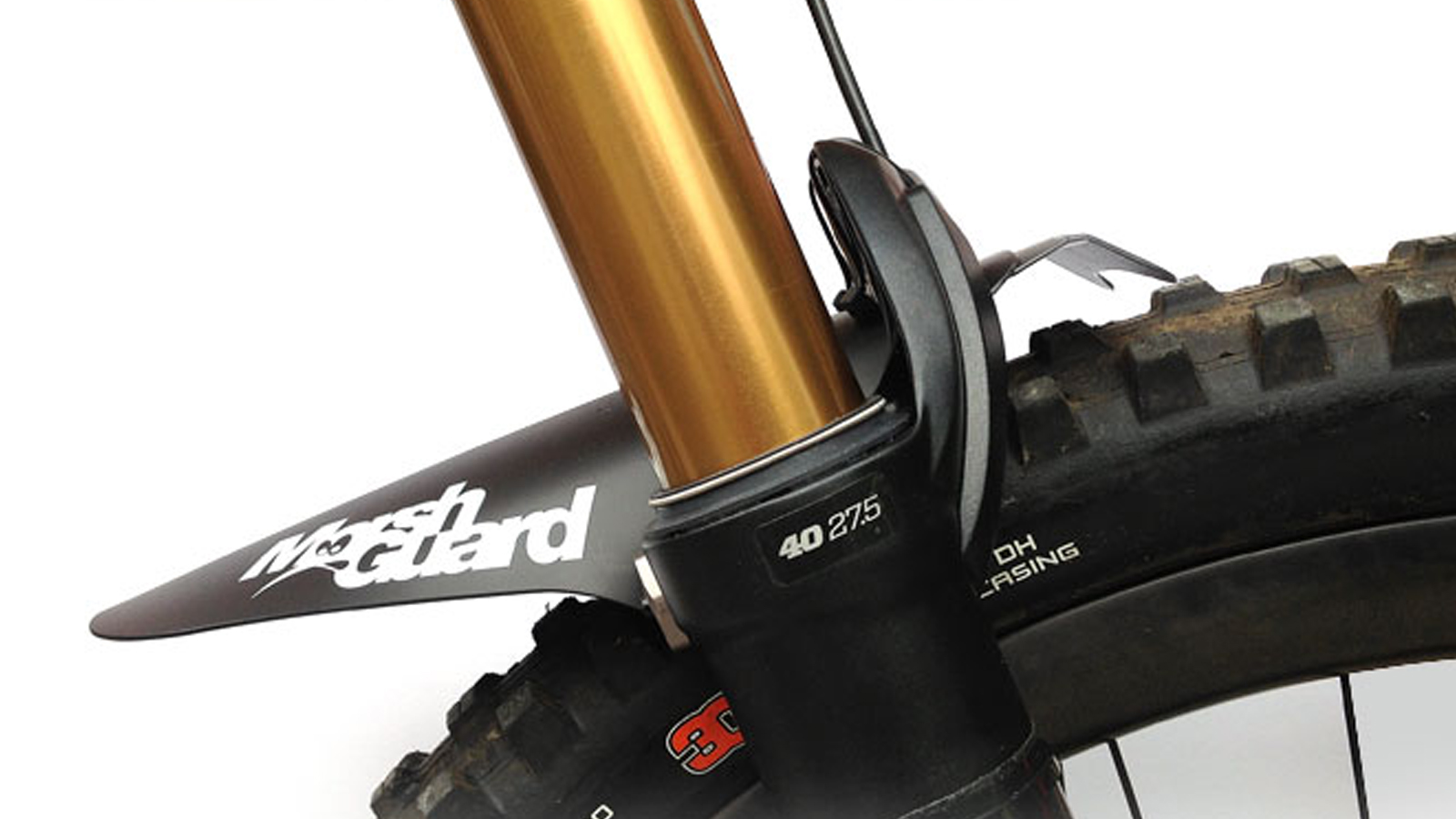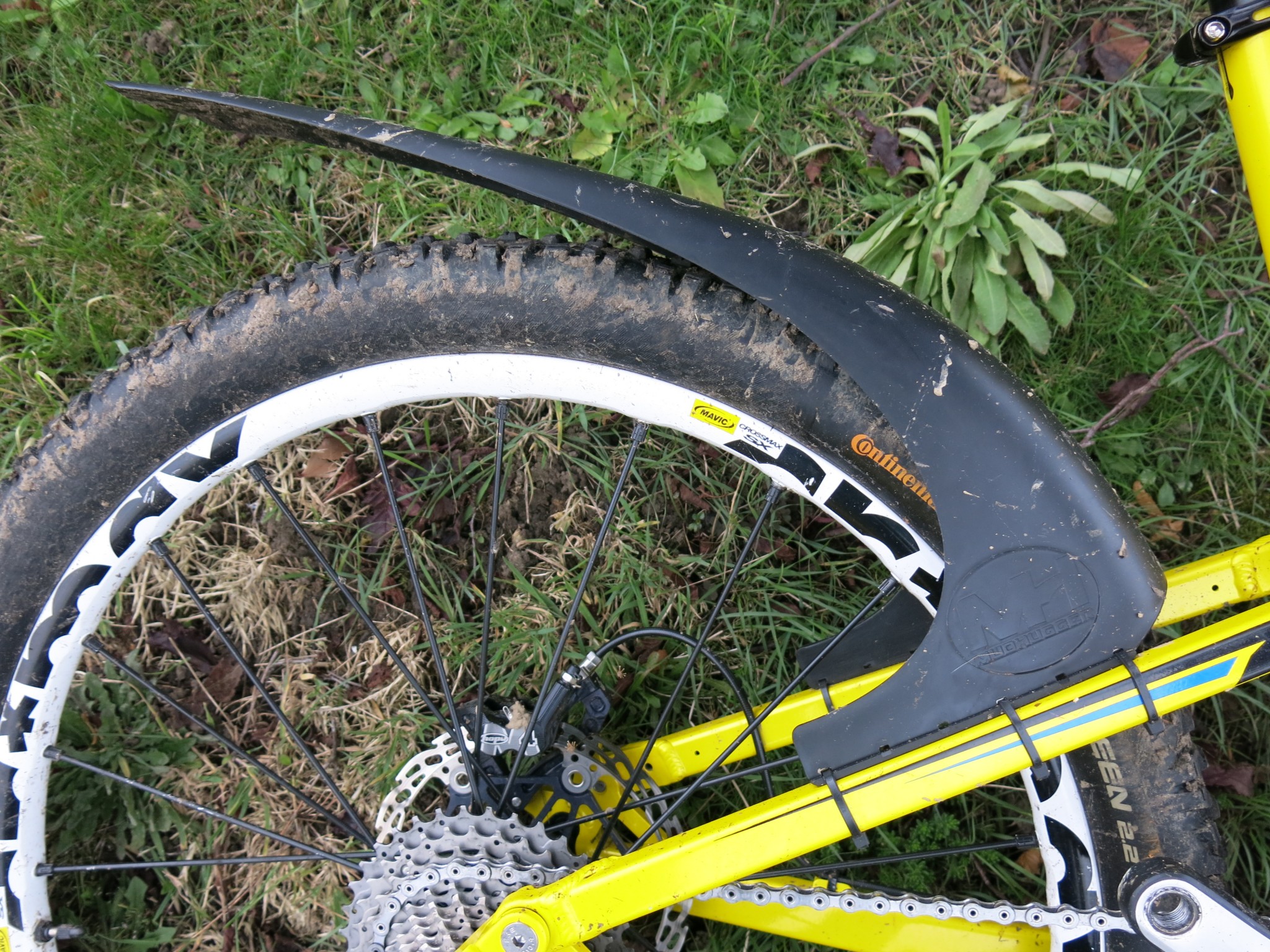The Significance of Mudguards for Mountain Biking
Mudguards, also known as fenders, play a crucial role in enhancing the overall cycling experience for mountain bikers. By installing mudguards for mountain bikes, riders can significantly improve safety, comfort, and performance during off-road rides. These essential accessories protect both the rider and the bike from dirt, mud, and water spray, ensuring a more enjoyable and productive ride.
Mudguards for mountain bikes are designed to shield the rider from various elements that can negatively impact their experience. For instance, mudguards prevent dirt and mud from being flung up by the tires, which can soil clothing and reduce visibility. Furthermore, mudguards protect the rider’s eyes and face from water spray, maintaining clear vision and preventing discomfort. By minimizing exposure to these elements, mudguards contribute to a safer and more comfortable riding experience.
In addition to the rider’s benefits, mudguards also protect the bike itself from damage. By preventing mud and water from reaching sensitive components, such as the brakes, drivetrain, and bearings, mudguards help maintain the bike’s performance and longevity. This protection reduces the need for frequent cleaning and maintenance, allowing riders to focus more on their riding experience and less on bike upkeep.
When selecting mudguards for a mountain bike, it is essential to consider factors such as compatibility with the bike’s frame, wheel size, and suspension system. Choosing the appropriate material, length, and attachment mechanism is also crucial for optimal performance and protection. By carefully considering these factors, riders can ensure that their mudguards effectively meet their needs and enhance their mountain biking experience.
How to Choose the Right Mudguards for Your Mountain Bike
Selecting the ideal mudguards for a mountain bike involves considering several factors to ensure compatibility, functionality, and protection. By carefully evaluating these aspects, riders can make informed decisions and enhance their off-road cycling experience.
First, assess the compatibility of the mudguards with the bike’s frame, wheel size, and suspension system. Mountain bikes come in various shapes and sizes, and selecting mudguards that fit securely and effectively is essential. Measure the required length, width, and attachment points to ensure a proper fit. Additionally, verify that the mudguards are compatible with the bike’s wheel size and suspension system, as these factors can impact the guard’s performance and stability.
Next, consider the appropriate material for the mudguards. Common materials include plastic, aluminum, and carbon fiber. Plastic mudguards are lightweight and affordable, while aluminum and carbon fiber guards offer increased durability and resistance to impact. Select a material that balances weight, cost, and durability based on your specific needs and preferences.
Length is another critical factor when choosing mudguards for mountain bikes. Longer mudguards provide superior coverage and protection, shielding both the rider and the bike from dirt, mud, and water spray. However, excessively long guards may compromise handling and clearance, particularly during tight turns or technical terrain. Striking a balance between coverage and functionality is essential for optimal performance.
Lastly, evaluate the attachment mechanism of the mudguards. Secure and adjustable attachment systems ensure that the guards remain in place during off-road rides. Common attachment methods include zip ties, clamps, or brackets. Select mudguards with a reliable attachment mechanism that is compatible with your bike’s frame and components.
By carefully considering these factors, riders can select mudguards for mountain bikes that provide superior protection, functionality, and compatibility. This thoughtful approach ensures an enjoyable and productive off-road cycling experience, safeguarding both the rider and the bike from the elements.
Top Mudguard Models for Mountain Bikes
When it comes to selecting mudguards for mountain bikes, several high-quality models cater specifically to off-road cyclists. This section introduces three notable options, each with unique features, benefits, and potential drawbacks.
SKS Chromoplastic Longboard
The SKS Chromoplastic Longboard is a premium mudguard designed for durability and performance. Its lightweight chromoplastic material offers excellent resistance to impact and corrosion, while the generous length ensures superior coverage and protection. The Longboard features a quick-release mounting system, allowing for easy installation and removal. However, its higher price point may be a deterrent for some riders.
Mucky Nutz Mudhugger
The Mucky Nutz Mudhugger is a popular choice among budget-conscious mountain bikers, offering robust protection at an affordable price. Constructed from injection-molded polypropylene, the Mudhugger is both lightweight and durable. Its unique design wraps around the fork arch, providing excellent coverage and mud deflection. However, the Mudhugger may not be compatible with all suspension systems, and its installation can be more complex than other models.
Zefal Shield Lite
The Zefal Shield Lite is a versatile mudguard suitable for various mountain bikes, thanks to its adjustable mounting system. Made from durable plastic, the Shield Lite is both lightweight and resistant to impact. Its sleek design minimizes wind resistance, while the adjustable mounts allow for custom positioning. However, the Shield Lite may not provide the same level of coverage as longer mudguards, and its adjustable mounts can be prone to loosening during off-road rides.
By evaluating these top mudguard models for mountain bikes, riders can make informed decisions based on their specific needs, preferences, and budget. Each of these options offers unique advantages and potential drawbacks, ensuring there is a suitable mudguard solution for every off-road cyclist.
Installing Mudguards on Your Mountain Bike: A Step-by-Step Guide
Installing mudguards on a mountain bike can enhance safety, comfort, and performance during off-road rides. By following this detailed, illustrated guide, riders can ensure proper installation and optimal protection.
Measuring the Correct Mudguard Length
Before purchasing mudguards, measure the distance between the bike’s dropouts and the desired coverage point. This measurement ensures the correct mudguard length, providing adequate protection without compromising handling or clearance.
Securing the Guards to the Frame
Mount the mudguards using the provided attachment mechanisms, such as zip ties, clamps, or brackets. Position the guards so they are securely fastened to the frame, without interfering with any components or suspension systems. Ensure even tension on all attachment points to prevent unnecessary strain or movement.
Adjusting Positioning for Optimal Protection
Adjust the mudguard positioning to ensure optimal protection from dirt, mud, and water spray. Position the guards close to the tires, but maintain sufficient clearance to prevent contact during operation. Fine-tune the angle and orientation of the guards for maximum coverage, while avoiding interference with the bike’s components or suspension systems.
Illustrated Example

The above image demonstrates a properly installed mudguard on a mountain bike, highlighting the correct length, secure attachment, and optimal positioning for protection.
By following this step-by-step guide, riders can successfully install mudguards on their mountain bikes, ensuring enhanced safety, comfort, and performance during off-road adventures. Proper installation and adjustment are crucial for the guards’ effectiveness and longevity, making this guide an essential resource for mountain bikers seeking superior mudguard solutions.
Maintaining and Cleaning Your Mountain Bike Mudguards
Proper maintenance and cleaning of mudguards for mountain bikes are essential for ensuring their longevity and continued effectiveness. By following these guidelines, riders can keep their guards in excellent condition and enjoy the full benefits of mudguard protection.
Regular Inspections
Inspect mudguards regularly for signs of wear, damage, or debris accumulation. Pay particular attention to attachment points, as loose or damaged mounts can compromise the guards’ effectiveness and stability. Address any issues promptly to prevent further damage or potential failure during off-road rides.
Removing Debris
Accumulated debris, such as mud, dirt, or gravel, can reduce the performance of mudguards and contribute to wear and tear. Regularly clean the guards using a soft brush, warm water, and mild detergent. Avoid using high-pressure washers, as they can damage the guards or compromise their attachment to the frame.
Addressing Signs of Wear or Damage
Promptly address any signs of wear, such as cracks, chips, or fraying, to prevent potential failure. Depending on the severity and location of the damage, consider repairing, replacing, or upgrading the affected components. Regular maintenance and timely repairs can extend the lifespan of mudguards and ensure their continued effectiveness during off-road rides.
Seasonal Maintenance
Perform seasonal maintenance on mudguards to prepare them for varying weather conditions. For example, during the winter months, apply a protective wax or sealant to shield the guards from salt, snow, and ice. Conversely, in the spring and summer, focus on removing accumulated debris and inspecting for signs of wear or damage caused by increased off-road use.
By following these guidelines for maintaining and cleaning mudguards for mountain bikes, riders can ensure their guards remain in optimal condition, providing consistent protection and enhancing overall safety, comfort, and performance during off-road adventures.
Comparing Mudguards with Alternative Mountain Bike Protection Solutions
While mudguards for mountain bikes offer numerous benefits, alternative protection solutions, such as fenders, chainstay protectors, and frame guards, also have their advantages and disadvantages. Understanding these differences can help riders make informed decisions about their mountain bike’s equipment.
Fenders
Fenders are similar to mudguards but typically offer more extensive coverage, shielding both the rider and the bike from various elements. However, fenders can be heavier and more cumbersome than mudguards, potentially impacting handling and performance. Additionally, fenders may not be compatible with certain mountain bike frames or suspension systems, limiting their applicability.
Chainstay Protectors
Chainstay protectors are designed to shield the bike’s chainstay from debris, mud, and water spray. These guards can help prevent damage to the frame and improve drivetrain performance. However, chainstay protectors do not offer the same level of rider protection as mudguards, and they may not be as effective in extreme conditions. Furthermore, installing chainstay protectors can be more complex than installing mudguards, requiring additional time and effort.
Frame Guards
Frame guards protect the bike’s frame and components from scratches, scuffs, and impact damage. While frame guards can help maintain the bike’s appearance and longevity, they do not offer the same level of protection from dirt, mud, and water spray as mudguards. Frame guards may also be more expensive than mudguards, depending on the material and quality of the product.
By comparing mudguards with alternative protection solutions, riders can determine the best option for their specific needs and preferences. Mudguards for mountain bikes offer an excellent balance of protection, performance, and affordability, making them a popular choice for off-road enthusiasts.
Customizing Your Mountain Bike Mudguards: Tips and Tricks
Adding a personal touch to your mudguards for mountain bikes can enhance both their functionality and aesthetics. By exploring various customization options, riders can create unique and practical solutions tailored to their preferences and needs.
Painting Mudguards
Painting mudguards is an excellent way to coordinate their appearance with the bike’s color scheme or express personal style. Use high-quality spray paint or specialized enamel paint to ensure a durable and attractive finish. Before painting, thoroughly clean the guards and remove any debris or old paint. Apply multiple thin coats, allowing each layer to dry completely before proceeding to the next. This method ensures a smooth, even finish and prevents drips or runs.
Adding Decals
Decals and stickers can add a personal touch to mudguards, reflecting the rider’s personality or interests. Choose decals that are durable, weather-resistant, and easy to apply. Before applying decals, ensure the mudguards are clean, dry, and free from debris. Carefully position the decals, using a squeegee or credit card to remove any air bubbles and ensure a smooth, secure adhesion.
Incorporating Accessories
Adding accessories to mudguards can enhance functionality and convenience. For example, installing lights or bells on the guards can improve visibility and safety during nighttime rides. Additionally, incorporating reflective materials or tape can increase the rider’s visibility to other road users, particularly in low-light conditions. When selecting accessories, ensure they are compatible with the mudguards and do not compromise their performance or stability.
Customizing mudguards for mountain bikes offers numerous benefits, allowing riders to express their individuality, enhance functionality, and create a unique riding experience. By exploring these tips and tricks, riders can create personalized mudguard solutions that meet their specific needs and preferences.
The Environmental Impact of Mudguards and Responsible Disposal Practices
Mudguards for mountain bikes, like any other consumer product, have environmental implications that should be considered. By adopting responsible disposal practices and eco-friendly alternatives, riders can minimize their environmental footprint and promote sustainable consumer habits.
Recycling Mudguards
When it’s time to replace or dispose of mudguards, consider recycling them if possible. Many mudguards are made from materials such as plastic or aluminum, which can be recycled and repurposed into new products. Check local recycling programs and facilities to determine the appropriate recycling methods for your mudguards.
Repairing and Upcycling Mudguards
Repairing or upcycling mudguards can extend their lifespan and reduce waste. For example, fixing minor cracks or damages can restore functionality and prevent the need for replacement. Upcycling involves repurposing mudguards for alternative uses, such as creating DIY planters, garden art, or functional home decor. By repairing or upcycling mudguards, riders can minimize waste and promote a circular economy.
Choosing Eco-Friendly Mudguard Alternatives
Opting for eco-friendly mudguard alternatives can help reduce the environmental impact of mountain biking. Look for mudguards made from sustainable materials, such as recycled plastic or natural rubber. Additionally, consider purchasing from brands that prioritize environmentally responsible manufacturing practices, such as using renewable energy sources or minimizing waste.
By adopting responsible disposal practices and eco-friendly alternatives, riders can minimize the environmental impact of mudguards for mountain bikes. These actions promote sustainable consumer habits, contributing to a healthier planet for future generations of mountain bikers and outdoor enthusiasts.








